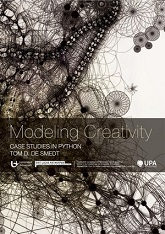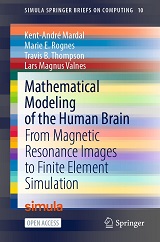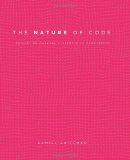
|
FreeComputerBooks.com
Links to Free Computer, Mathematics, Technical Books all over the World
|
|
- Title: Modeling Creativity: Case Studies in Python
- Author(s) Tom De Smedt
- Publisher: Uitgeverij UPA University Press Antwerp; eBook (Creative Commons Licensed)
- License(s): Creative Commons License (CC)
- Paperback: 168 pages
- eBook: PDF (168 pages, 6.6 MB)
- Language: English
- ISBN-10: 9057182602
- ISBN-13: 978-9057182600
- Share This:

|
This book explores how creativity can be represented using computational approaches. Our aim is to construct computer models that exhibit creativity in an artistic context, that is, that are capable of generating or evaluating an artwork (visual or linguistic), an interesting new idea, a subjective opinion.
It examines creativity in a number of different perspectives: from its origins in nature, which is essentially blind, to humans and machines, and from generating creative ideas to evaluating and learning their novelty and usefulness. We will use a hands-on approach with case studies and examples in the Python programming language.
The topic of this book is to model creativity using computational approaches in Python programming language. The aim is to construct computer models that exhibit creativity in an artistic context, that is, that are capable of generating or evaluating an artwork (visual or linguistic), an interesting new idea, a subjective opinion.
About the Authors- Tom De Smedt is a senior researcher at the Computational Linguistics Research Group, co-founder of the Experimental Media Research Group, and co-founder of the language technology company Textgain.
- Computational Simulations and Modeling
- Python Programming
- Art, Music, and Related Books
- Artificial Intelligence (AI), Logic Programming, Machine Learning, etc.
- Miscellaneous and Uncategorized Books
 Similar Books:
Similar Books:
-
 Modeling Neural Circuits Made Simple with Python
Modeling Neural Circuits Made Simple with Python
An accessible undergraduate textbook in Computational Neuroscience that provides an introduction to the mathematical and computational modeling of neurons and networks of neurons in Python. Build a foundation for modeling Neural Circuits.
-
 Mathematical Modeling of the Human Brain
Mathematical Modeling of the Human Brain
The book bridges common tools in medical imaging and neuroscience with the numerical solution of brain modelling PDEs, covers the basics of magnetic resonance imaging and quickly proceed to generating first FEniCS brain meshes from T1-weighted images.
-
 Modeling and Simulation in Python (Allen B. Downey)
Modeling and Simulation in Python (Allen B. Downey)
This book is an introduction to physical modeling using a computational approach with Python. You will learn how to use Python to accomplish many common scientific computing tasks: importing, exporting, and visualizing data; numerical analysis; etc.
-
 Modelling and Simulation for Big Data Applications
Modelling and Simulation for Big Data Applications
Long considered important pillars of the scientific method, Modelling and Simulation have evolved from traditional discrete numerical methods to complex data-intensive continuous analytical optimisations.
-
 Python for Informatics: Exploring Information (Charles Severance)
Python for Informatics: Exploring Information (Charles Severance)
This book provides an Informatics-oriented introduction to programming. The primary difference between a computer science approach and the Informatics approach taken in this book is a greater focus on using Python to solve problems.
-
 The Nature of Code: Simulating Natural Systems with Processing
The Nature of Code: Simulating Natural Systems with Processing
A range of programming strategies and techniques behind computer simulations of natural systems, from elementary concepts in mathematics and physics to more advanced algorithms that enable sophisticated visual results, using Processing.
-
 Introduction to Metadata: 3rd Edition (Murtha Baca, et al)
Introduction to Metadata: 3rd Edition (Murtha Baca, et al)
Provides an overview of Metadata - its types, roles, and characteristics; a discussion of metadata as it relates to resources on the Web; a description of methods, tools, standards, and protocols that can be used to publish and disseminate digital collections;
-
 AI Art: Machine Visions and Warped Dreams (Joanna Zylinska)
AI Art: Machine Visions and Warped Dreams (Joanna Zylinska)
The book critically examines artworks that use AI, be it in the form of visual style transfer, algorithmic experiment or critical commentary. It also engages with their predecessors, including robotic art and net art.





